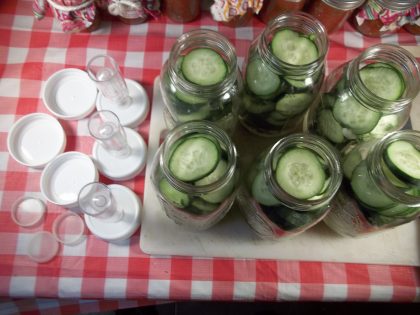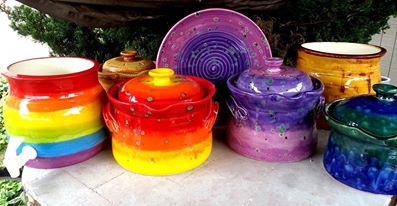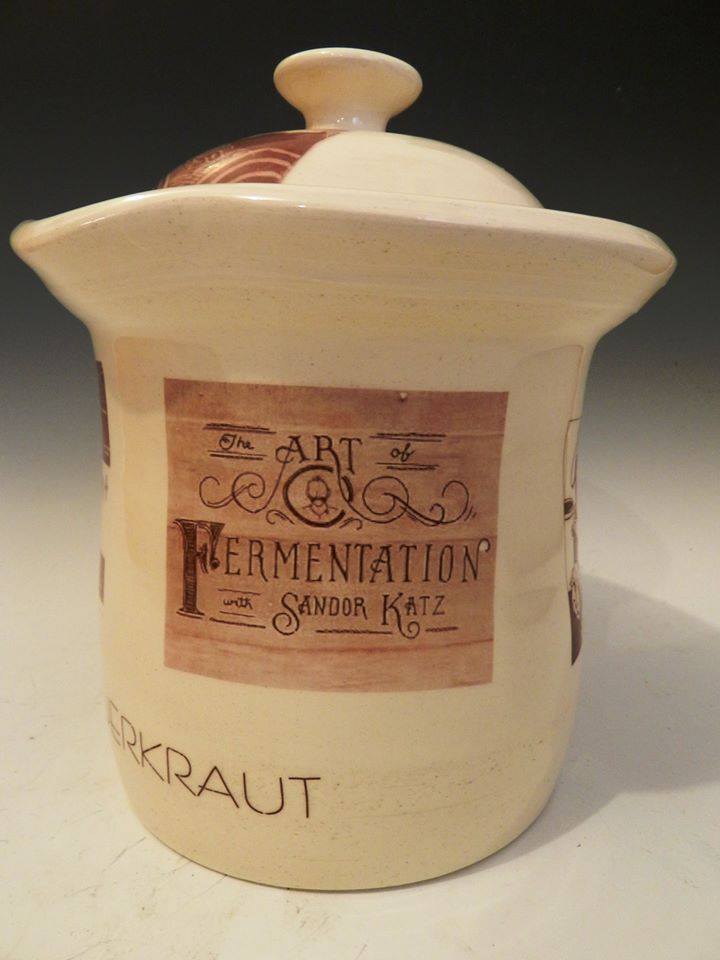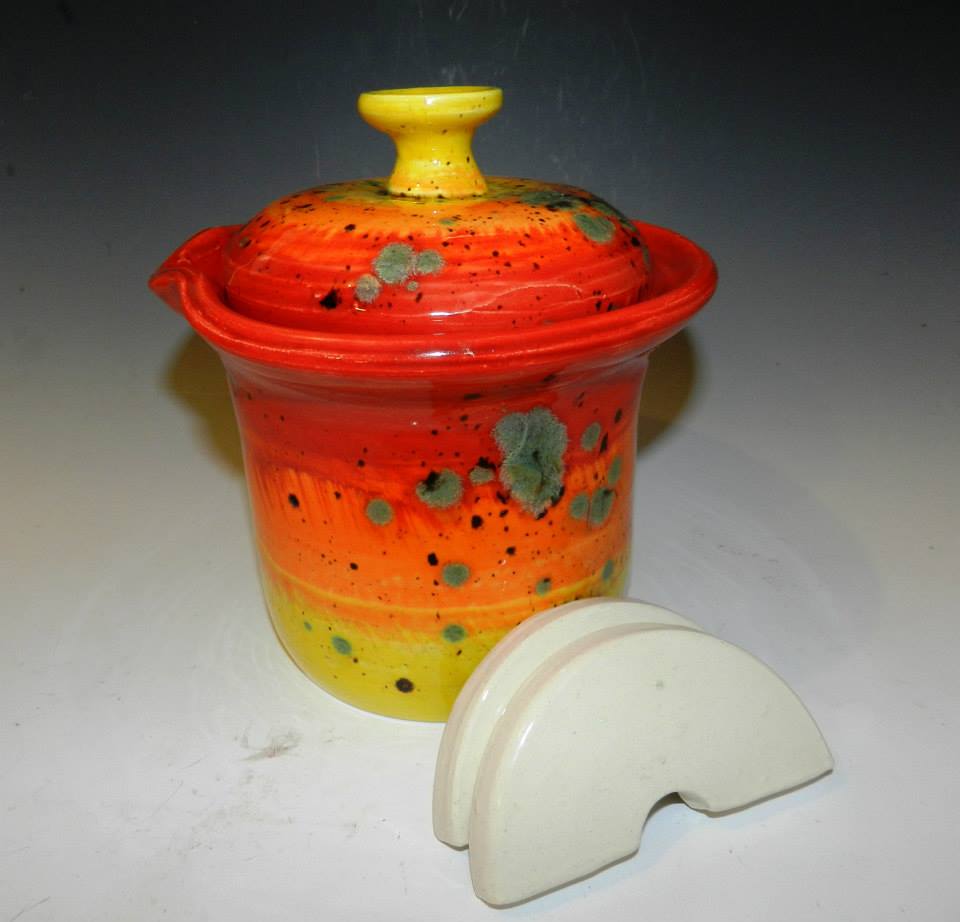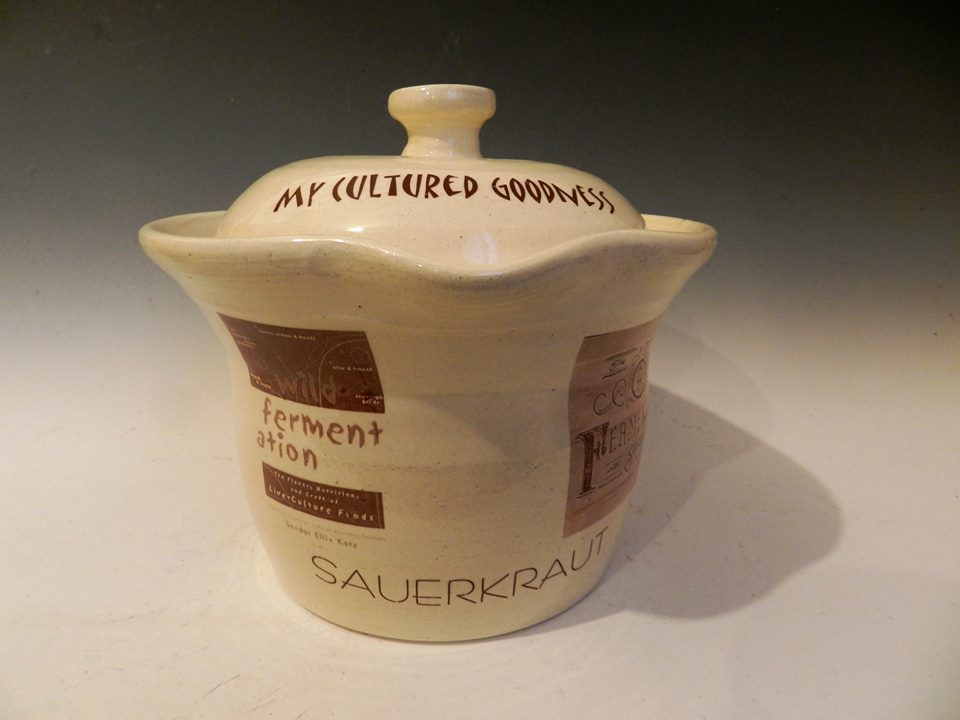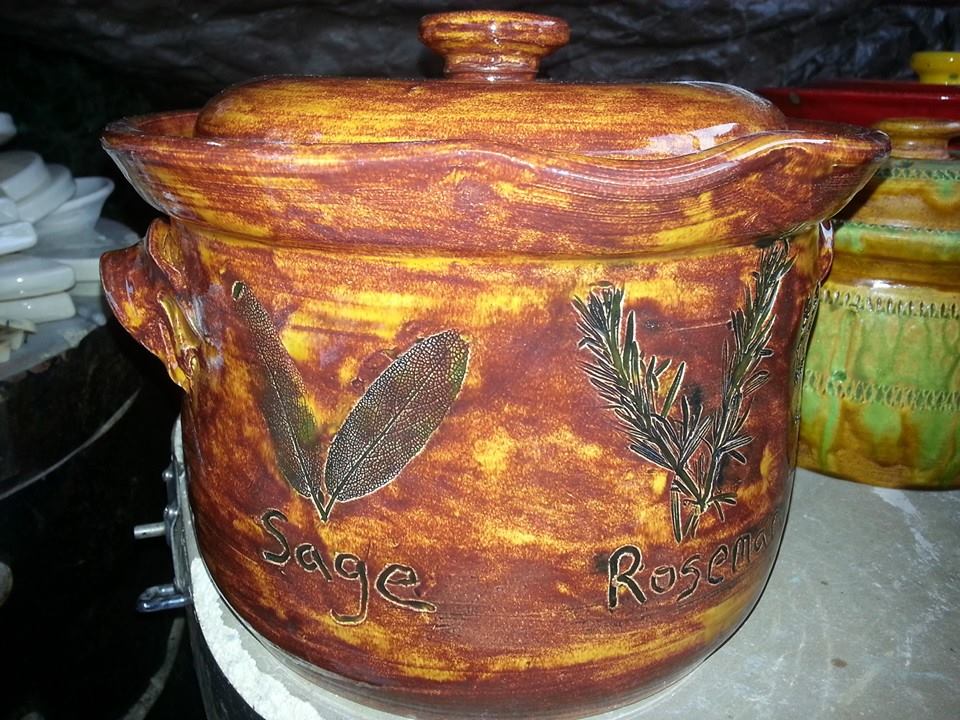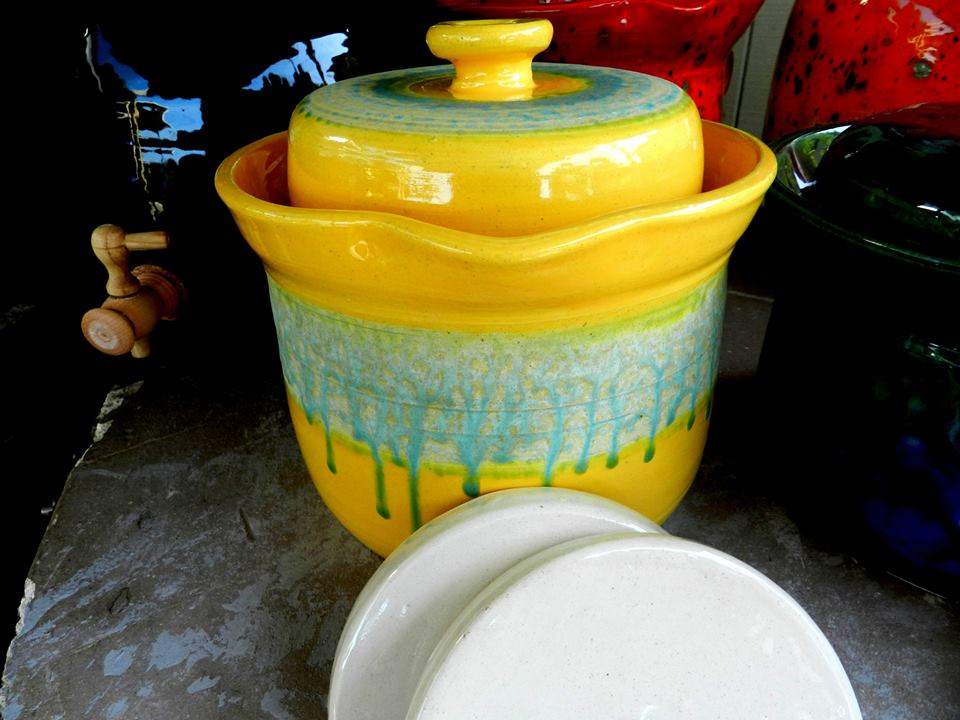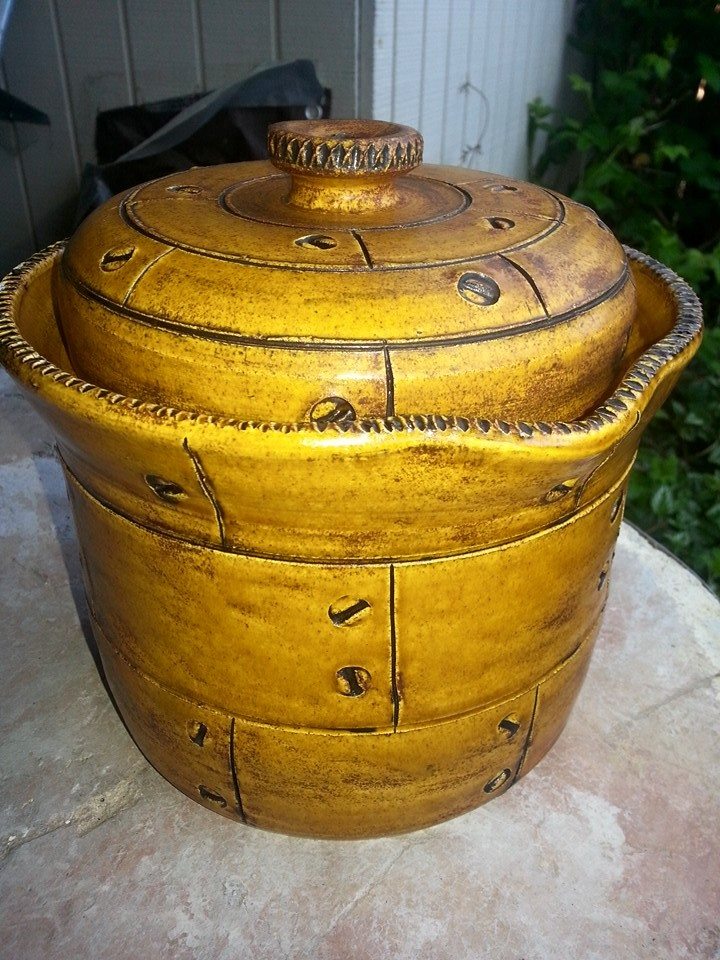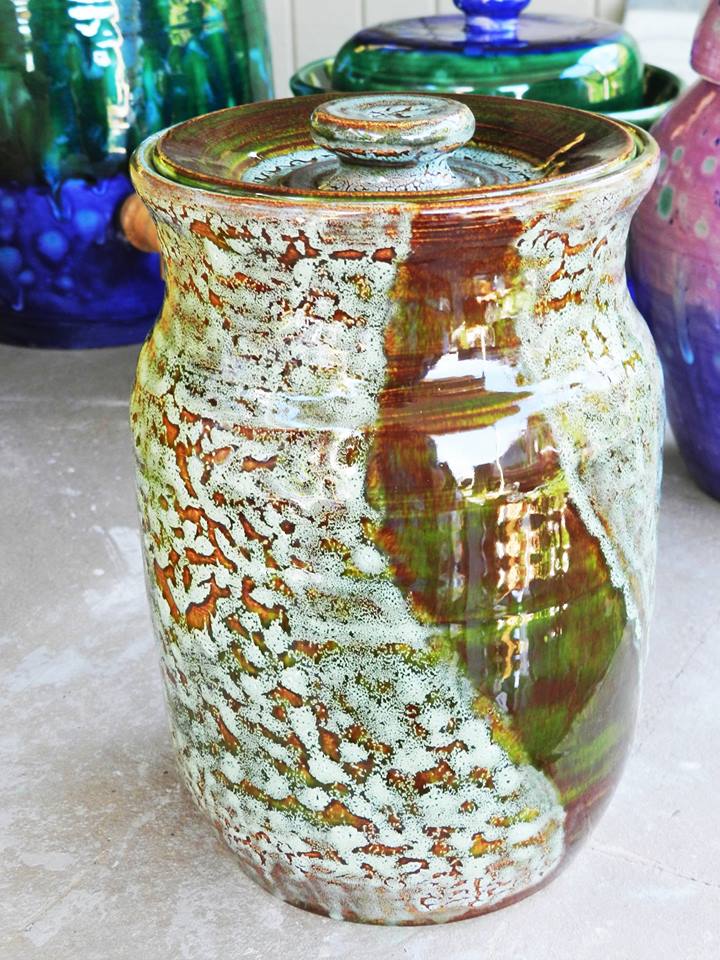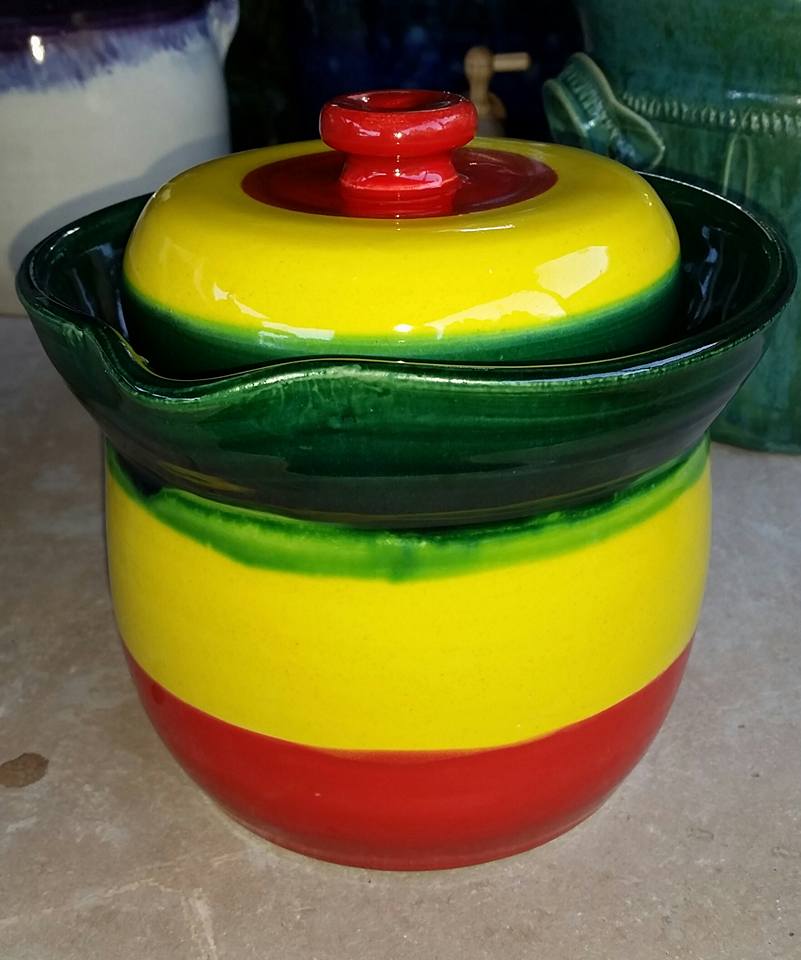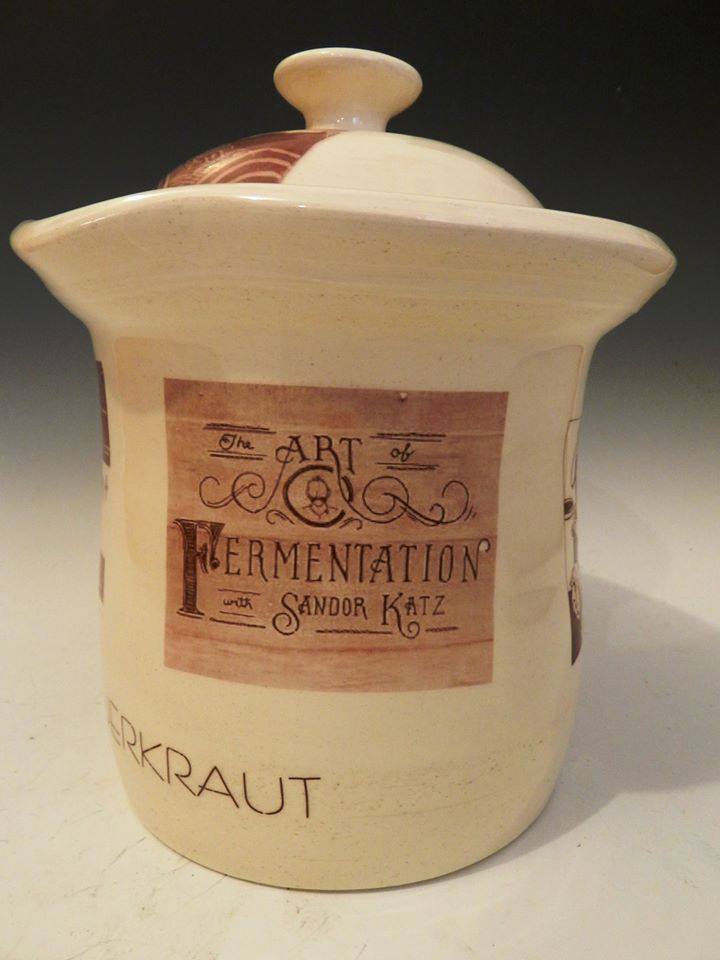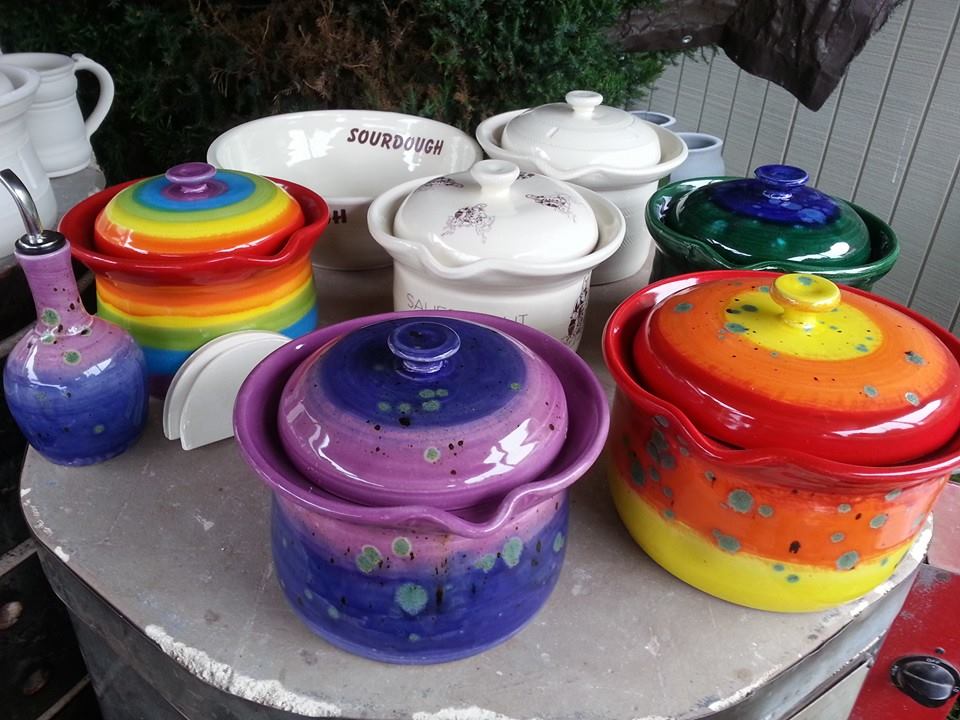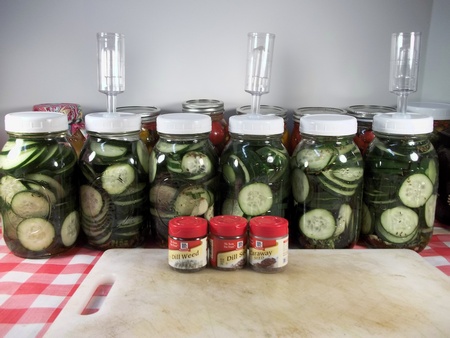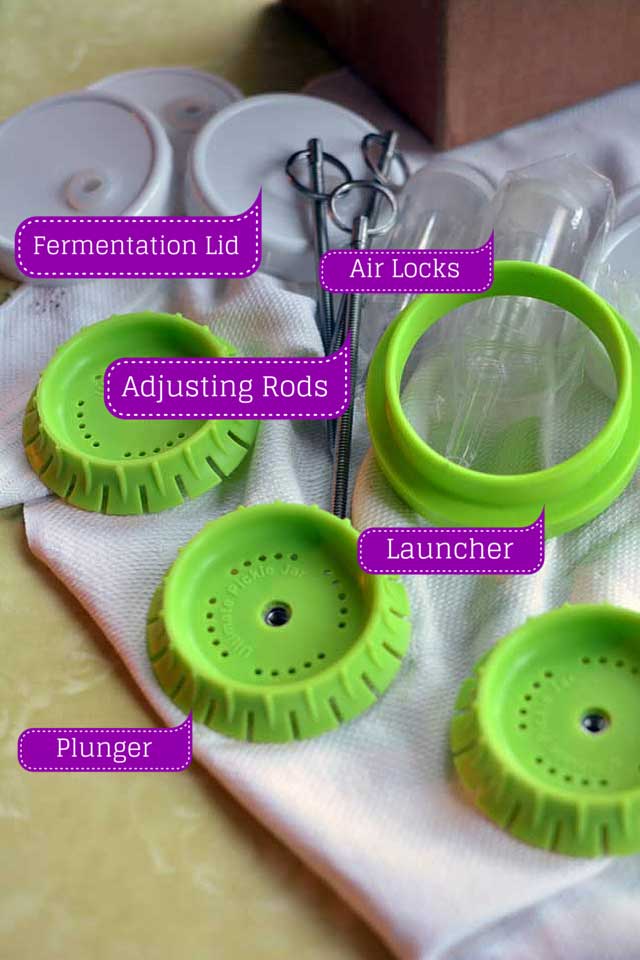How do I choose a fermenting container to get started?
Fermenting container choice is one of personal preference. The fermenting container that you choose must simply hold your brine and should restrict contact with O2. It should protect your contents form contamination and it should be able to release the CO2 that is generated. That is all there is to a fermenting container. Goat bladders , skins and even banana-leaf lined holes in the ground have been used in the past as fermenting containers but we will from this point on stay a little more modern.
Why is this important? The brine discourages bad bacteria, molds and yeasts that will spoil the fermenting vegetables . Salt has long been recognized as being a preservative and using a liquid form works effectively to discourage spoiling bacteria from the start of the process. At this point we have already helped our vegetables to survive nature’s onslaught. Lacto bacteria love salt. 🙂
While a ferment is underway, it will produce CO2 [ carbon dioxide ]. This hinders the growth of bad elements. This action when carried out in a controlled atmosphere of the fermenting container, results in a CO2 enriched “blanket” which further discourages bad microbes from gaining a foothold in our ferment. Lacto bacteria love CO2 🙂
Your fermenting container must be constructed of a material that will not harbor mold and should be able to withstand the extreme salt and acid environment of your ever-changing brine as it goes from a “base” PH to an acid one as the friendly bacteria create a habitat that the spoiling bacteria are not able to thrive in.
Traditionally used are:
- The sauerkraut crock
- The Fido jar
- The mason jar
* All these work well and operate basically the same. They hold brine and limit contact with the outside air which contain possible contaminating microbes seeking a place to colonize and allow CO2 to build a protective blanket in the fermenting container. Two of these explained here have a built in "pressure relief" feature built into them. That is the traditional fermenting crock and the Fido type jars. The mason jar has to be modified with an airlock system to be fully functional. [leaving the lid loose is not a good way to control the CO2 content of a jar unless you are right there to release when pressure is high and replace when pressure stops escaping to keep O2 and bad bacteria and mold from entering]
Type of vessel: Grandma’s Kraut Crock
Description: Large, usually earthern fermenting container with built in “moat” that functions as an effective airlock when filled with water. Veggies are placed inside and covered with brine and a fermenting weight is placed to hold contents under the protective brine. The “moat” is filled with water and the lid placed into the “moat” and monitored for evaporation as the ferment progresses. This allows the CO2 to build up and release under the lid through the “moat”.
Here is a great place to plug a special source of fermenting crocks. Handmade, one at a time, by one of the last and best "Functional Artists" in the field.... Mr Mark Campbell of Mark Campbell Ceramics
Pro's and Cons: Due to size it will hold a more even temperature and as it is usually made of an opaque material so that sunlight can not effect the contents. A fermenting crock can convert a large amount of raw veggies into a winter's supply of tasty DIY food in a hurry! The unit is heavy and is best suited for large batchs. It requires weights to hold contents under the brine. * Almost every family has one of these in their possession. IF you are using an heirloom, keep in mind that old vessels may have contained a lead based finish and may not be the best thing to use actively. Always check with the producer when buying a new one! It is possible to test your old one with a lead test pen but we are not sure how reliable this method really is! The crock is great for large batches. But be prepared to process the resulting fermented foods for better storage rates unless your audience has some heavy eaters. The large batch is best suited for tried and proven recipes. There is nothing like having a 3 gallon or larger ferment finish and finding out that it had "just todammuch garlic" :)
Type of vessel: Fido type wire bail jar
Description: A type of glass jar once popular in the USA for home canning but widely replaced by the “mason jar” due to it’s failure to fully seal during the heat based processes used to can foods. It has a “wire-bail” feature that brings forth nostalgic memories. It does not require an airlock to operate as the lid gasket will allow CO2 to escape with a burping action when enough pressure develops. Comes in many sizes.
INSERT PICS HERE OF FIDOS Pro's and Cons: The jar is imported from Italy and can be pricey. There are functional "knock-offs" on market but the parts do not always interchange. They call for a weight system to hold contents under brine although some people cling to the belief that once the CO2 blanket has developed there is no need to cover the contents with brine. We do not hold that belief to be wholly accurate! They are harder to work during the fermenting process if used with a water filled airlock as it needs removed from the lid to prevent spillage of water. Using the new "water less airlock" solves this problem nicely. There are many Fido sizes available. The release of overflowing brine through the gasket at random places can be a drawback. It requires placing jar into a catch pan in most cases. Installing a good quality grommet and airlock helps the overflow issue as the airlock can hold some of the overflow but also makes accessing the jar top work it a lot harder. Installing an airlock in the fido does defeat the benefit of the "self-burping" gasket as the pressure that an airlock requires to "burp" is so so much lower than that of the installed gasket when fully compressed by the lid.
Type of vessel: Mason jar
Description: A standardized make of jar used extensively in the home canning and fermenting field. It will not expel CO2 pressure efficiently without constant attendance and supervision. The jars are often adapted with a special lid and gasket fitted with an external airlock to allow CO2 to escape which reduces chance of explosions as well! They also have many of the same problems of the Fido type jar.
INSERT PICS OF MASON JAR KITS HERE
Pro's and Cons: The jars are readily available and affordable. There are many sizes available. They are a good choice for small batch fermenting . They do require a weight system. A good gasket and grommet to maintain airtight integrity and an airlock is a bonus as well to prevent explosions from active ferments and reduces the need to "burp" manually. A good system to use for small batch rotational fermenting. Mason jars have the same overflow collection problem that Fido jars have unless an airlock is used which can catch some of the overflow. Plan your needs and only ferment what you need in a steady and specific time frame to avoid having to process for long term storage and deliver probiotic rich food to your table.
In conclusion:
All 3 fermenting containers work well. Each has it’s own set of benefits, hacks and drawbacks. For example you do not want to use a 5 gallon crock system for a quart of veggies. Nor would you want to make a 4 gallon ferment with a new recipe only to find you did not like the result! That said if you are preserving a whole garden crop with a proven recipe…. you would most likely want to ferment in a crock and process the results for longer storage. This would be possible in jars but would take up more space for sure and labor! So to recap: If you want volume….. use granny’s kraut crock and process the larger amounts for longer storage. If you want a slow steady stream of live probiotics at your table or want to try a few recipe variations without committing to the one version you may not like OR only have a limited quantity of a veggie….. use Fido or mason jars and eat “fresh” and “live” and “small batch”. It is our belief that a well equipped kitchen should include all type of fermenting containers. There are so many things to ferment that we use in our everyday lives that have been replaced by “packaged” dead foods void of any health benefits that our ancestors and modern doctors say we need! Maybe it is only a few quarts of pickles, a bottle of spicy ketchup or a jar of tangy salsa you need today. It may be that you have acquired a taste for fancy kimchi or sauerkraut and don’t want to waste funds on store bought versions. Or it may be a need to preserve the proceeds of a garden or take advantage of low prices at the market…….. You should have a variety of fermenting containers on hand and be familiar with how to use them.
This would be an excellent place to ask why a person writing this article and actively in the business of making fermenting kits for mason jars would leave the reader with the impression that anything but mason jars were the best to use? I mean it calls for extra addition of an airlock to vent CO2 and still suffers from overflow issues
NOTE: We do not mean that you can not use the fermented goods from the crock without processing! Rather we mean that as a general rule most people do "can" or "process" their crock contents which allows them to last longer. They do lose their probiotic goodness but they retain the other benefits of fermentation while gaining additional storage life.
Here are some links to great FaceBook Groups that will help you almost instantly if you are polite! 🙂
Wild Fermentation Uncensored : Great site ran by admins who really care about their members. They run vendor days and allow uncensored posts on sometimes controversial topics.
Fermenters Kitchen : General fermenting group. Very active and friendly.
Fido Fermentation : A site for Fido enthusiasts
Kefir Time : A kefir sharing group
The Salt Cured Pickle: A fermenting group that does it all.
ANd many more. These are just a few we post to 🙂

